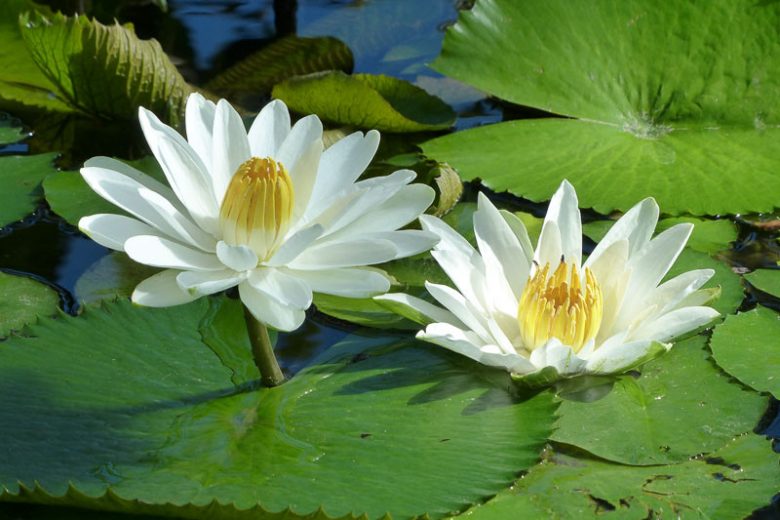Nymphaea lotus

|
|
Nymphaea lotus Common Names: White Egyptian Lotus, White Water Lily,
Tiger Lotus Scientific
Classification Kingdom: Plantae Clade: Tracheophytes Clade: Angiosperms Order: Nymphaeales Family: Nymphaeaceae Genus: Nymphaea Species: N. lotus Authority: L. Synonyms: Nymphaea rubra Roxb., Nymphaea edulis DC., Nymphaea dentata Schumach. & Thonn. Morphological Description Nymphaea lotus is
a perennial aquatic herb in the Nymphaeaceae family, growing from a thick,
fleshy rhizome anchored in sediment: · Rhizome: Horizontal, 5–10 cm thick, brown, producing adventitious
roots and shoots (Burkill, 1997). · Leaves: Floating, orbicular, 20–45 cm in diameter, green with wavy
margins, often purple-spotted beneath (Fern, 2024). · Flowers: Large, 15–25 cm across, white with pinkish tinges, fragrant,
with 20–30 petals, rising 20–30 cm above water (Barwick, 2004). · Fruit: Globose, 3–5 cm in diameter, spongy, containing numerous
small, black seeds (Burkill, 1997). Distribution and Habitat Nymphaea lotus is
widespread in freshwater ecosystems across Africa and Asia: · Range: Native to Egypt, West Africa (Senegal to Nigeria), East
Africa (Kenya to Tanzania), and southern Asia (India, Thailand); naturalized in
Florida, Australia, and the Caribbean (Fern, 2024). · Habitat: Ponds, lakes, slow-moving rivers, swamps; thrives in
20–30°C, pH 6–7.5, depths of 0.3–2 m, tropical/subtropical climates (Burkill,
1997). Ethnopharmacology Nymphaea lotus (Egyptian White Water Lily) is a medicinal aquatic plant widely
used in traditional medicine for its diverse therapeutic properties due to the
presence of flavonoids, alkaloids, tannins, glycosides, and saponins(Tungmunnithum
et al (2020). It exhibits antioxidant, antimicrobial, anti-inflammatory,
antidiabetic, and sedative effects. Traditionally, it is used for wound
healing, gastrointestinal disorders, fever reduction, and respiratory ailments.
The plant has aphrodisiac and fertility-enhancing properties, promoting
reproductive health. Its extracts have been studied for antidiabetic effects,
helping to regulate blood sugar levels. Additionally, it acts as a mild
sedative, aiding in stress relief, anxiety, and insomnia. The plant's
antimicrobial activity makes it effective against bacterial and fungal
infections, while its anti-inflammatory properties help manage arthritis and
pain-related conditions. Antioxidant: Used in Ghana for oxidative stress relief.
Afolayan et al. (2013) found acetone extract (IC50 0.016 mg/mL) excelled in
DPPH scavenging. · Anti-inflammatory: Leaf paste in Nigeria reduces swelling.
N’Guessan et al. (2021) showed ethanolic extract (250 mg/kg) reduced paw edema
in rats by 50%. · Wound Healing: Rhizome poultices in Senegal treat sores. Akinjogunla et al.
(2009) confirmed antimicrobial activity against wound pathogens like Staphylococcus aureus. · Sedative/Hypnotic: Flower tea in Egypt for insomnia. Kameni
et al. (2017) noted aqueous extract (400 mg/kg) enhanced sleep duration in
rats. · Digestive Aid: Roots in Uganda for dyspepsia. Burkill (1997) documents its
use for diarrhea and stomach aches. ⚠ Toxicity Profile: High doses of leaf extract (>600 mg/kg)
caused sedation and liver enzyme elevation in rats after 28 days. Rhizome
overconsumption may cause gastrointestinal distress due to tannins. Avoid in
pregnancy due to lack of safety data (Kameni et al., 2017). Additional Uses · Cultural: Symbol of rebirth in Egyptian mythology; featured in art and
tomb reliefs (Barwick, 2004). · Culinary: Rhizomes, seeds, and young fruits eaten as famine food in
West Africa; seeds roasted or ground into flour (Burkill, 1997). · Ornamental: Popular in water gardens and aquariums for its striking
flowers and foliage (Fern, 2024). References
External Links More Pictures
|
|
| Compounds of Nymphaea lotus |
|
| References |